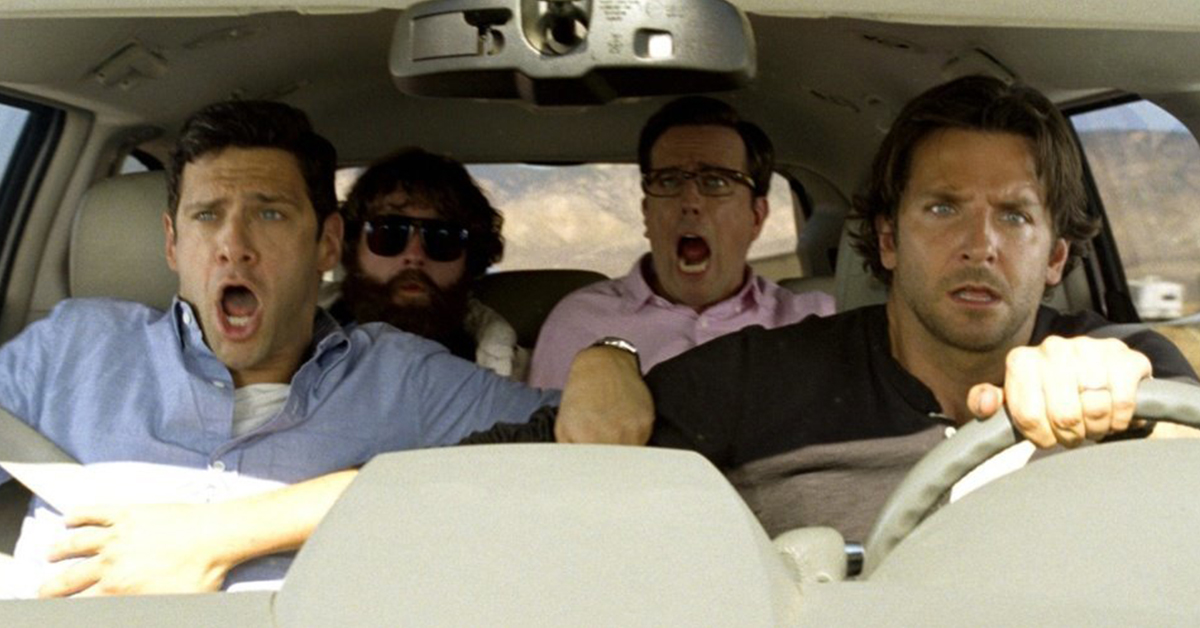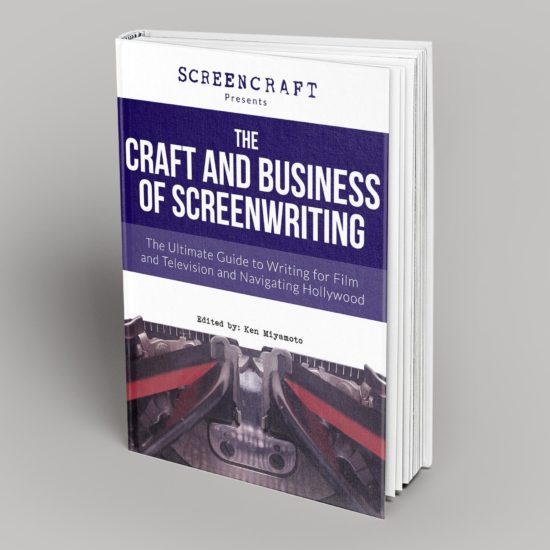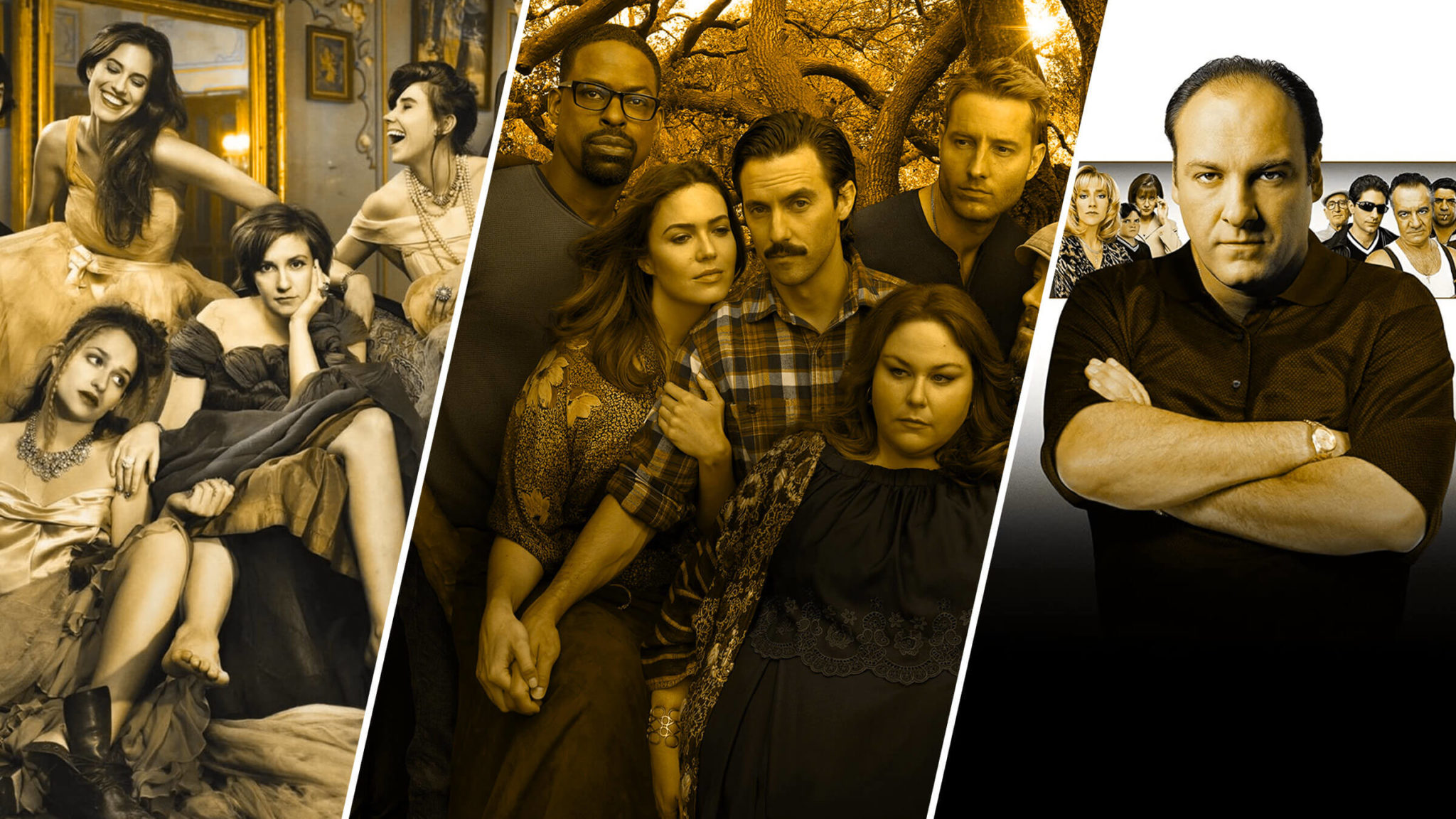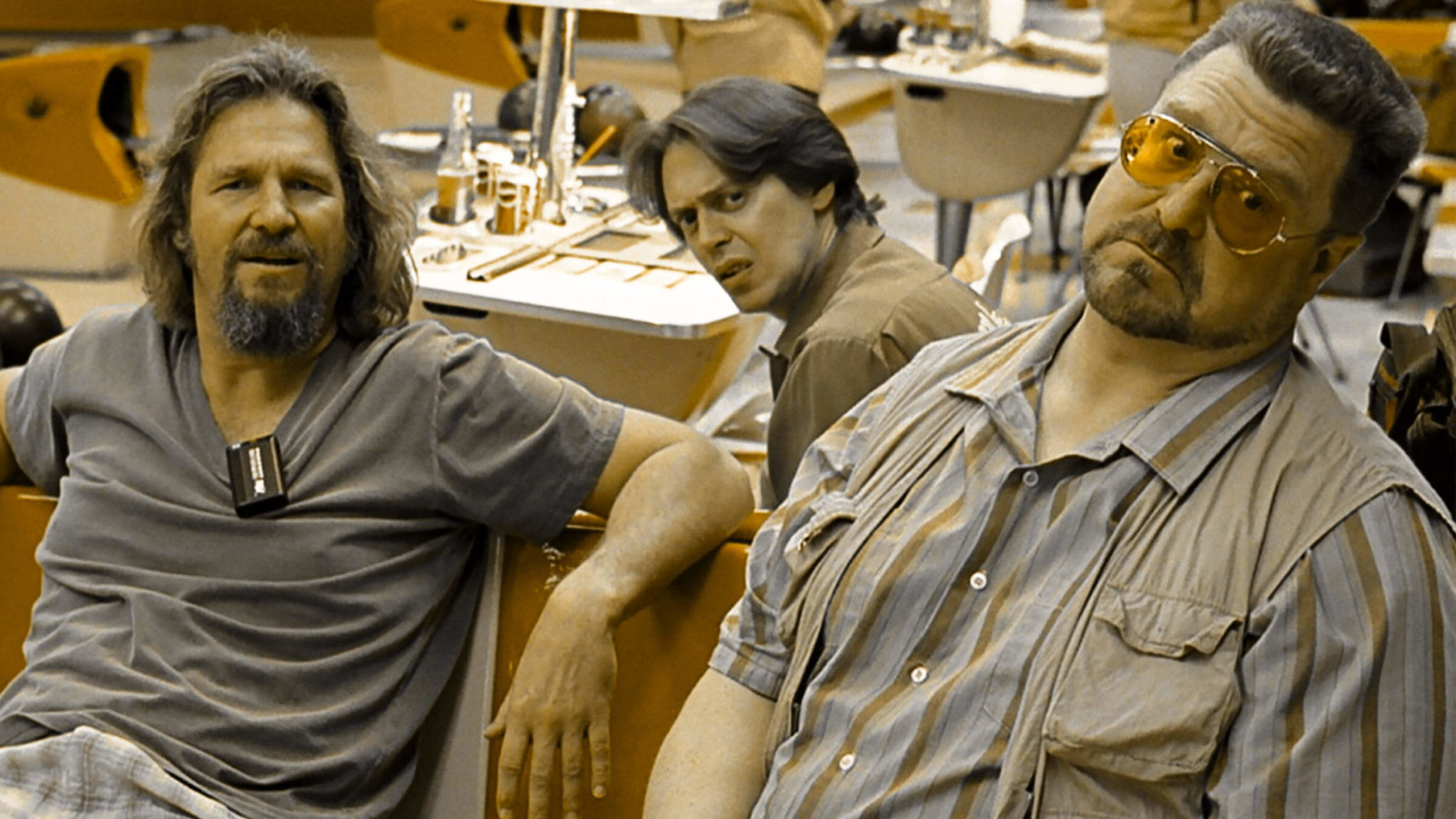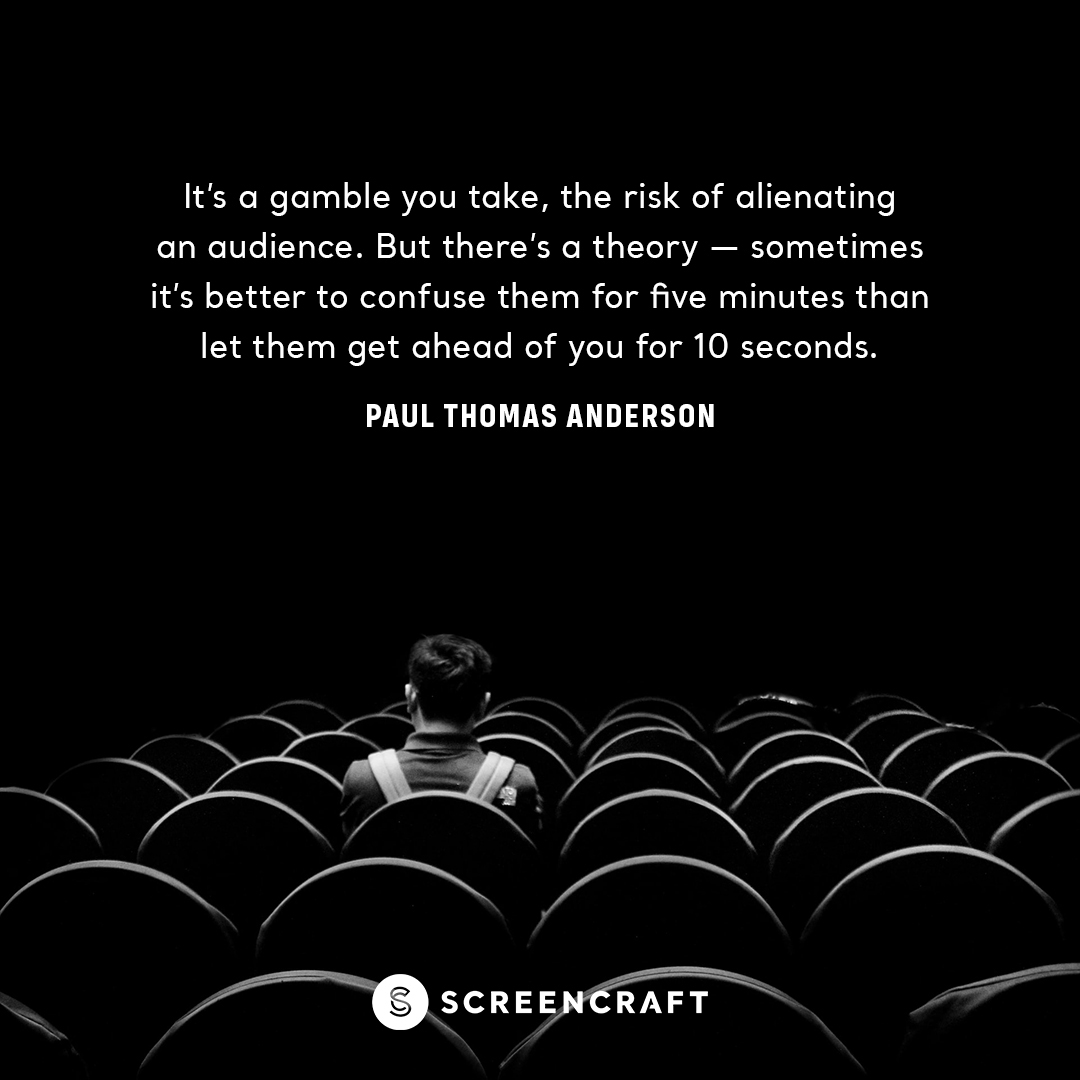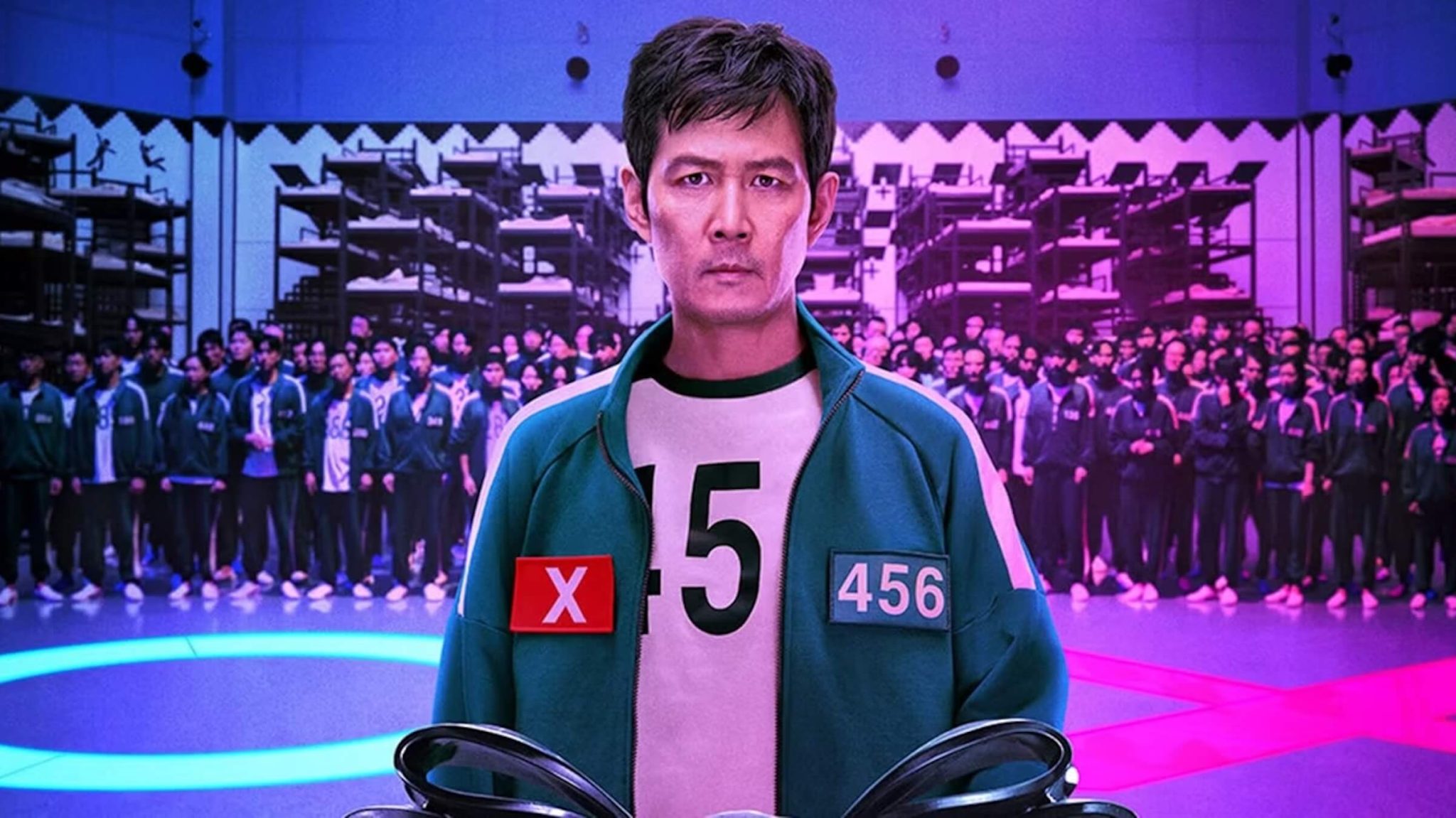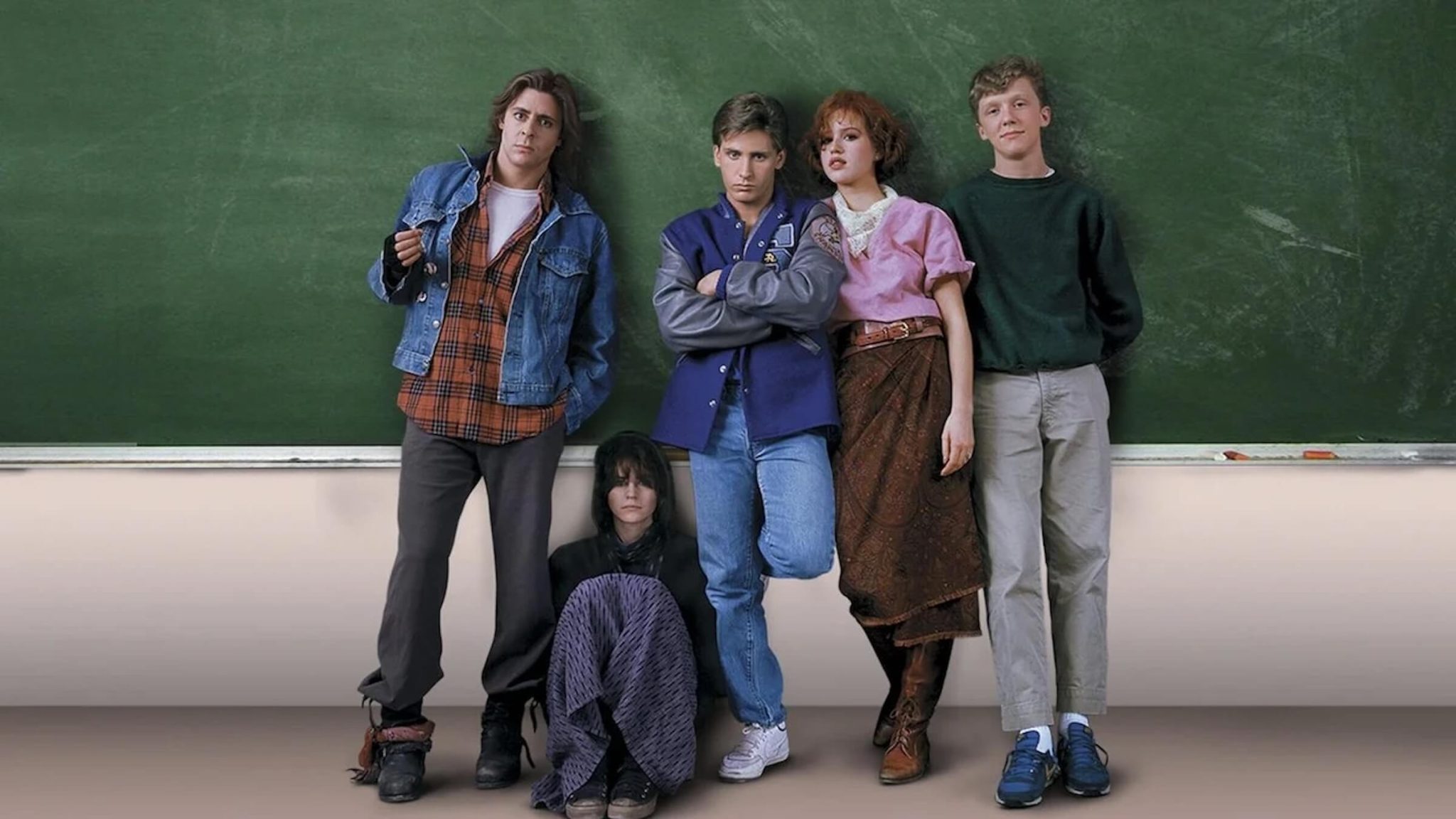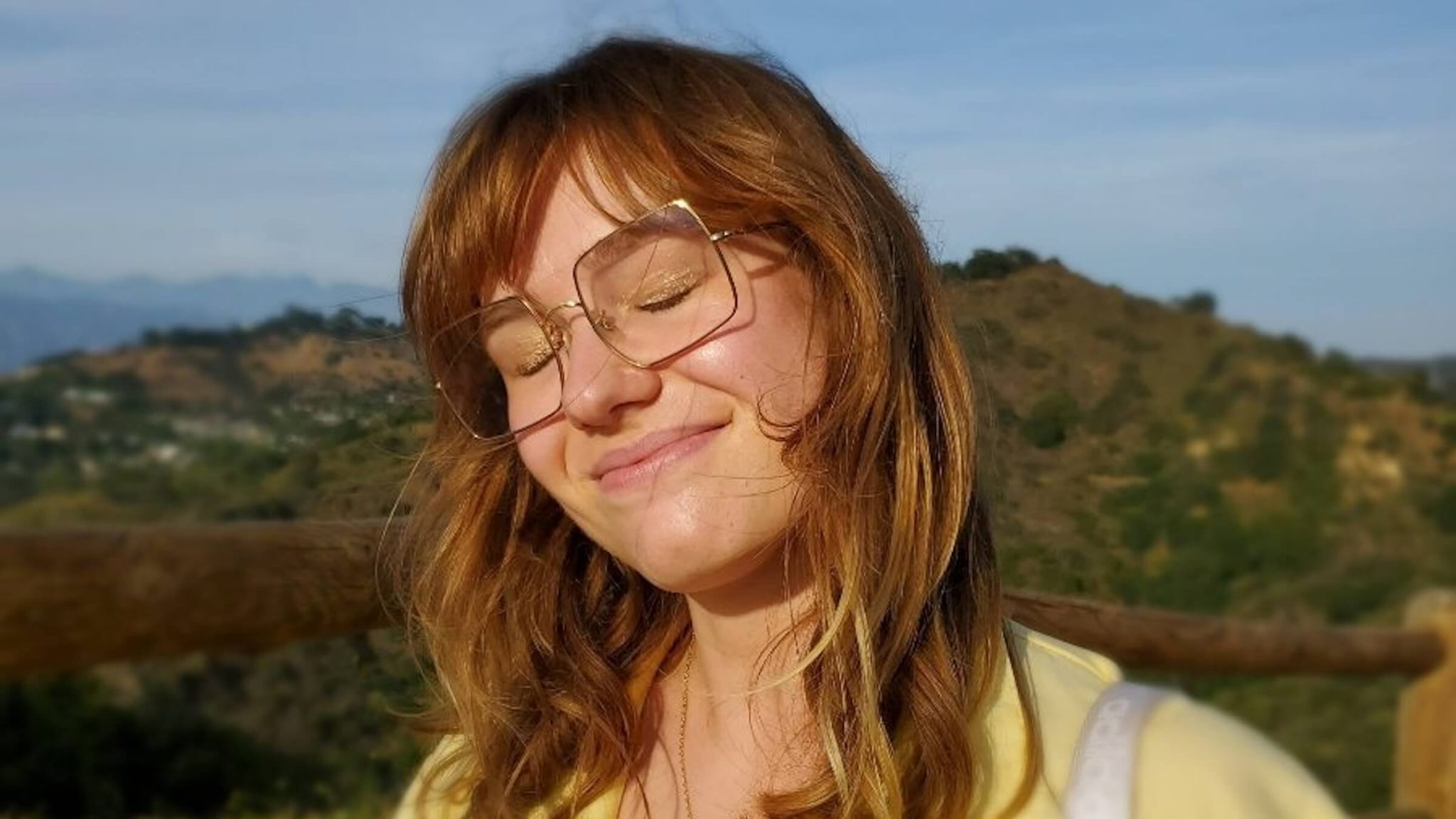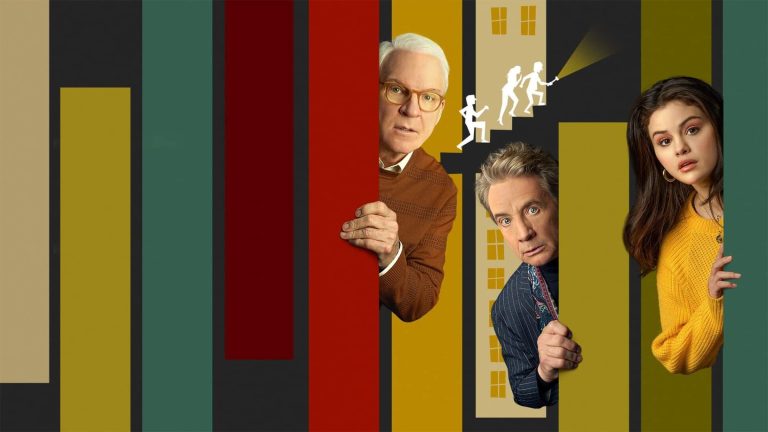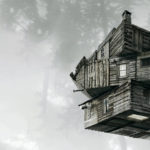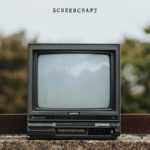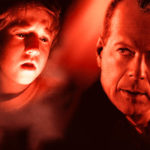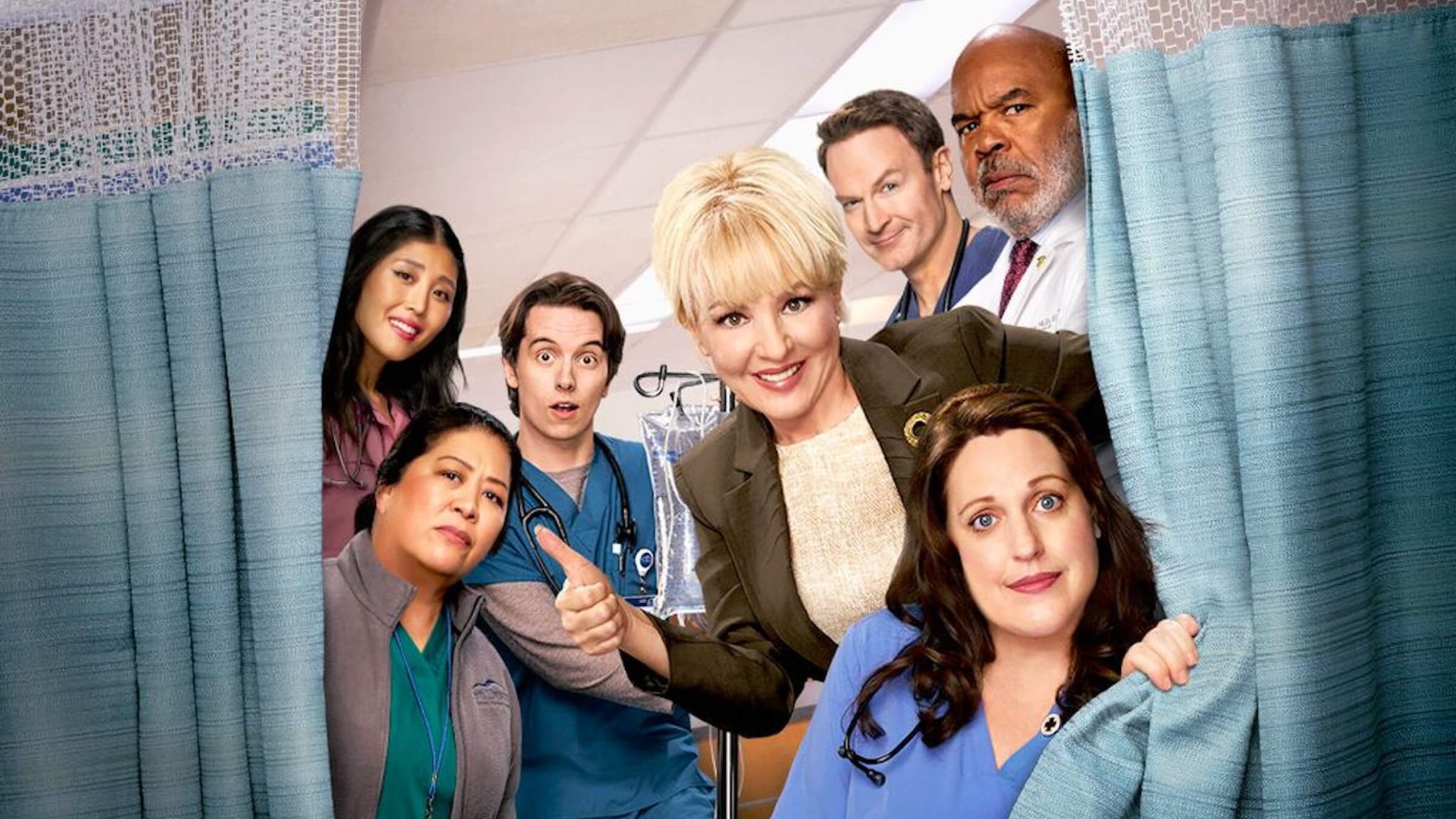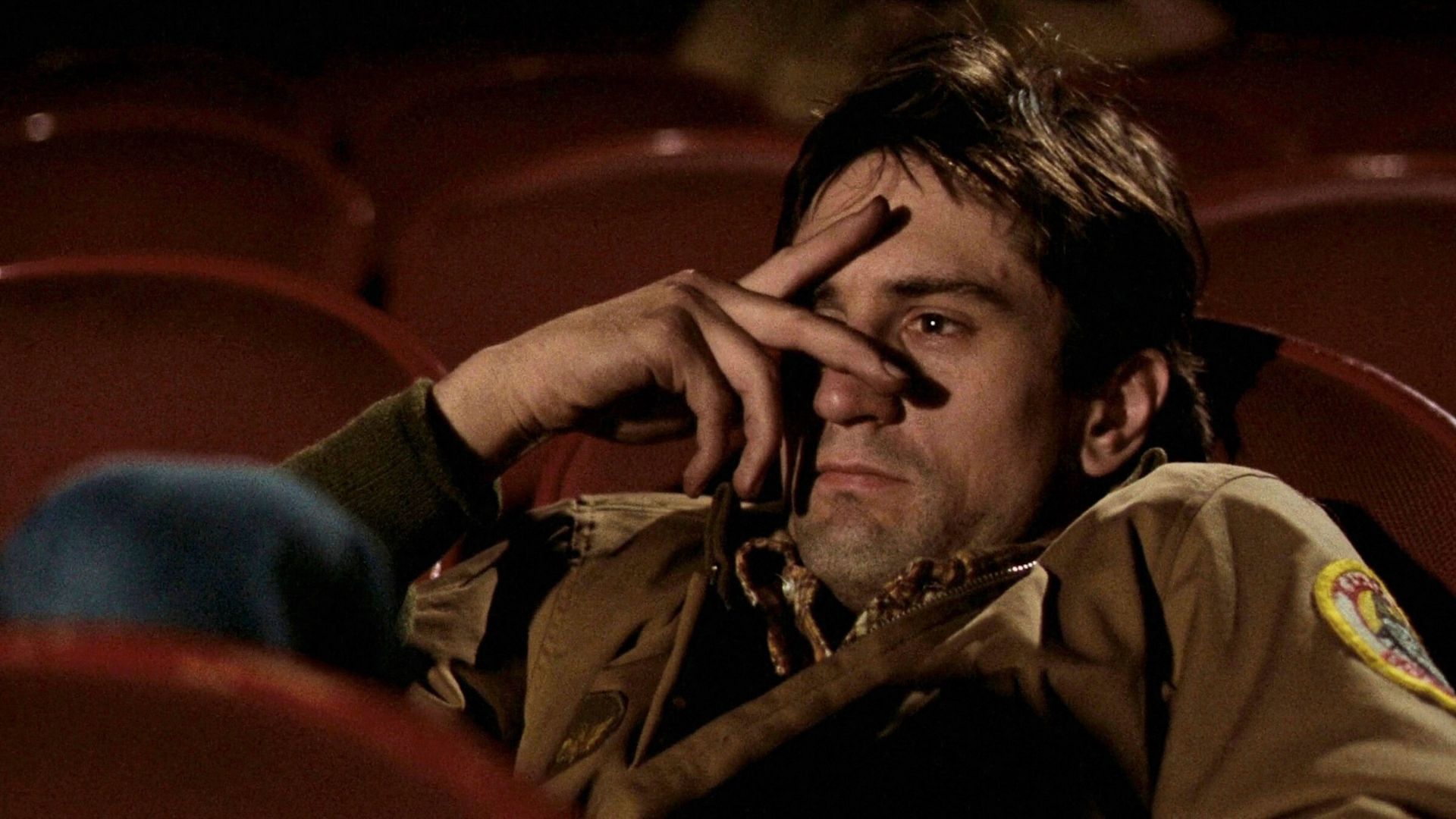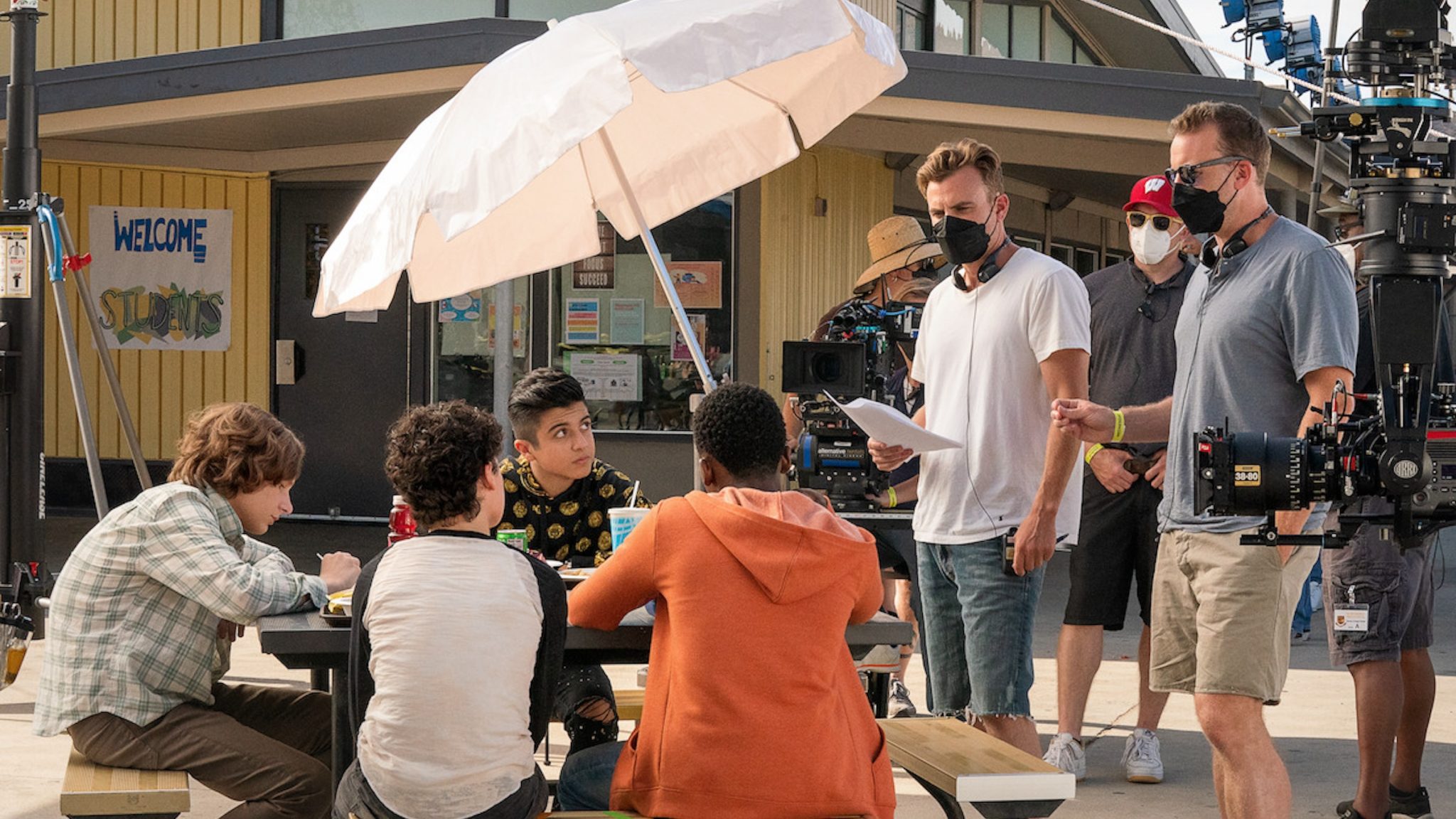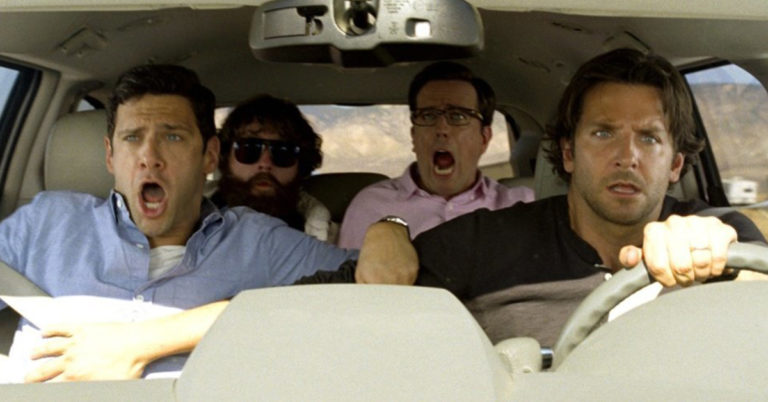
Think of a surprise as a frustrated expectation. A scene dances back and forth between expectation and eventual surprise. To create a strong reversal, it’s not enough to veer sharply toward the surprise. A twist in a scene or story must be preceded by an extreme move in the opposite direction. This “zig” to the expectation accentuates and, in some way, creates the power of the “zag”: the reversal, surprise or punchline.
Whether it’s in a comedy or stuffy Oscar-bait drama, a well-choreographed and crafted reversal or surprise will “look” exactly the same. These two scenes from vastly different movies illustrate the “shape” or “movement” of a surprise.
In the scene below from L.A. Confidential, Bud White (Russell Crowe) is beating the crap out of Exley (Guy Pierce) because he slept with his “girlfriend.” At a pivotal moment, White grabs a chair and it looks like he is ready to hit Exley... immediately before the surprise and reversal... he throws it through the window. He chooses not to hit him and begins cooperating with him to solve the crime.
The playful moment below in the western McLintlock mirrors the scene in L.A. Confidential in its setup and payoff. McClintock (John Wayne) is angry at a gun-wielding man. He tells him that he’s not going to hit him. And then again. And, then of course, he wallops him. The man tumbles fifty feet down a hill and into a muddy pool of water, which helps to keep the tone light.
Notice how each scene instantly traverses the expanse between “most certainly hitting” and “not hitting.” But in opposite directions.
IN COMEDY
This craft is essential to comedy. A punchline is a reversal just like a plot twist or a scene’s climax. Humor comes from not only the punchline but in its contrast from the setup -- the zig and the zag. Let’s see how this works in scenes from The Hangover and Game Night.
Do you have a comedy script that will impress our jury? Enter the ScreenCraft Comedy Screenplay Contest.
THE HANGOVER
In a recent class, I played a game with the students. All of them remembered the inciting incident (pages 13 and 14) from The Hangover. The crew wakes up from the previous night’s party and their suite is a chaotic wreck. They have to piece together the previous evening to find their missing friend. Maybe my students were hungover, too, because they couldn’t remember the obvious (in retrospect) line of perfect setup.
We went searching for the long lost line. I asked for ideas for things you do at parties. They quickly got to “make a toast.” We agreed the essence of the new situation in the story was “forgetting.” “What is the opposite of ...” Before I could finish, one of them blurts out, “Remember! To a night we’ll always remember.” Close! What is the literal negation of “forgetting”?
Aha!
“To a night we’ll never forget.”
To a zig we’ll never forget!
GAME NIGHT
Game Night was a clever comedy that exploited its fun concept very well.
A group of friends think they are part of a murder mystery party but, surprise, real and dangerous thugs break in and kidnap one of them. The moment below when the dangerous villains arrive (at the 1:20 mark) -- where the fake game turns real -- is a well-crafted reversal.
A startling KNOCK ... then walks in a fake operative Agent Henderson played by Geoffrey Wright. A purposeful cliché, he takes off his too-cool-for-school sunglasses and awkwardly delivers the over-the-top instructions for the game’s mission and even flashes the “dossiers.” (Ironic casting? I think Wright overacts sometimes.)
The “players” laughing and mock his melodramatic warnings of danger. Fake danger versus real danger. Expectation versus surprise. Although Agent Henderson yells and claims, “It’s not a joke, you’re in real danger,” the scene is swaying toward “fake” and eventually gets there. If the “real” and “dangerous” baddies were to barge in now, the craft would make it a sharp reversal.
However, I love the next bit of craft. The scene retreats one step farther away from “real” beyond “fake” and all the way to what I’ll call “not real”:
After he gives the instructions in-character, “Agent Henderson” loosens up, changes his posture and tone of the voice, and drops all pretense of the game. Now, he is clearly acting as a representative of the game company and recites by rote a banal disclaimer: “Before we get started I’m required to ask if any of you have any food allergies. Peanuts...”
At the exact moment the scene goes all the way to “not real,” the “real” and “dangerous” baddies burst through the door. You can check it out below.
***
In these two comedy examples, I was wrestling with some semantics in how I defined a moment: fake, real, not real, forgetting, remembering, not forgetting. Regardless of my labels, this is par for the course ... the process you go through.
Don’t be afraid to fumble... or fidget... to find the exact phrase and perfect setup. A concise and precise opposite will contribute to the crispest turn and funniest execution.
CONCLUSION
Right before a scene’s climactic twist, shift toward the expected -- as far away as you can get from the surprise/frustration. Simply, you have to go left before you go right. If McLintlock announces, “I am going to hit you,” immediately before doing so, there is no discernible turn. An audience won’t enjoy the climactic “wallop” as a reversal without the sharp movement that immediately precedes it.
Learn how to write great movie dialogue with this free guide.
The “zig” to the opposite highlights and bolsters the eventual zag.
The ability to use both the setup and payoff to orchestrate your surprises will immediately improve your craft and make your scripts funnier.
 Jim Mercurio is a writer, author, screenwriter, and filmmaker. His book The Craft of Scene Writing is the first-ever screenwriting book that focuses solely on scenes. He has directed or produced five feature films and has helped countless writers as a teacher, story analyst, and script doctor. He directed more than 40 DVDs on screenwriting, including his own 6-disc set, Complete Screenwriting. One of the country’s top story consultants, Jim works with Oscar-nominated and A-List writers as well as beginners.
Jim Mercurio is a writer, author, screenwriter, and filmmaker. His book The Craft of Scene Writing is the first-ever screenwriting book that focuses solely on scenes. He has directed or produced five feature films and has helped countless writers as a teacher, story analyst, and script doctor. He directed more than 40 DVDs on screenwriting, including his own 6-disc set, Complete Screenwriting. One of the country’s top story consultants, Jim works with Oscar-nominated and A-List writers as well as beginners.
Photo credit: The Hangover
For all the latest ScreenCraft news and updates, follow us on Twitter, Facebook, and Instagram.
Tags
Get Our Screenwriting Newsletter!
Get weekly writing inspiration delivered to your inbox - including industry news, popular articles, and more!


